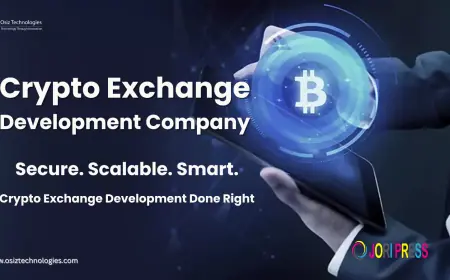Pouches and Bags
Pouches and Bags
Pouches and Bags: Utility, Fashion, and Function in One
From the humblest drawstring pouch to the most luxurious designer handbag, Pouches and Bags have been essential tools and cultural symbols throughout human history. They serve as carriers of goods, expressions of identity, and representations of societal status. Today, they are more diverse and specialized than ever, blending style, practicality, and sustainability in innovative ways.
The History of Pouches and Bags
The use of Pouches and Bags dates back to ancient civilizations. Archaeological evidence shows that humans used rudimentary bags made from animal hides, plant fibers, or woven materials as early as 3300 BCE. Ötzi the Iceman, a 5,300-year-old mummy discovered in the Alps, carried a pouch containing tools, showcasing how long bags have been part of daily human life.
In ancient Egypt, pouches were often sewn into clothing or tied around the waist, while Roman soldiers used leather satchels to carry rations and personal items. During the Middle Ages in Europe, belt pouches were common among both men and women before pockets became a standard part of clothing.
As fashion evolved, so did the design and purpose of bags—eventually becoming not just a practical item but also a symbol of style, class, and gender roles.
Types of Pouches and Bags
There are countless types of pouches and bags, each with unique functions and features. Here are some of the most common:
1. Handbags
Handbags are arguably the most iconic type of bag in fashion. Used primarily by women, they come in numerous styles such as totes, satchels, clutches, and crossbody bags. Brands like Louis Vuitton, Gucci, and Chanel have turned handbags into luxury status symbols.
2. Backpacks
Originally designed for hiking and travel, backpacks are now an everyday essential for students, commuters, and travelers. They offer hands-free convenience and even weight distribution. Modern designs include anti-theft features, USB ports, and laptop compartments.
3. Messenger Bags
Originally used by couriers and postal workers, messenger bags are crossbody-style bags known for their flap-over design. They're popular among students and professionals for their blend of casual style and practical organization.
4. Tote Bags
Tote bags are large, open-top bags with parallel handles. They’ve become especially popular for their eco-friendly fabric options and spaciousness. Many brands use totes as promotional items or fashion statements.
5. Duffel and Gym Bags
Designed for travel and athletic purposes, duffel bags are cylindrical with a zipper closure and handles. Gym bags often include shoe compartments, ventilated pockets, and waterproof linings.
6. Drawstring Pouches
Simple and versatile, drawstring pouches are used for small items, jewelry, or cosmetics. They’re also popular as gift bags and packaging solutions.
7. Waist Bags and Fanny Packs
Once considered outdated, waist bags have made a fashion comeback. They are worn around the waist or across the chest for carrying essentials like phones, keys, and wallets, especially during festivals or travel.
8. Laptop and Gadget Bags
Specialized for tech storage, these bags feature protective compartments, cable organizers, and shock-absorbing materials to keep electronics safe.
9. Reusable Shopping Bags
With growing environmental awareness, reusable fabric or foldable shopping bags are replacing plastic bags in many countries. They are lightweight, durable, and often made from recycled materials.
Materials Used in Pouches and Bags
The choice of material affects the bag’s durability, price, environmental impact, and appearance. Common materials include:
-
Leather – Durable and classic, often used in premium and luxury bags.
-
Canvas – A heavy-duty fabric ideal for tote bags, backpacks, and duffels.
-
Nylon & Polyester – Lightweight, water-resistant, and used for sports, travel, and utility bags.
-
Jute & Cotton – Eco-friendly, biodegradable options, frequently used in reusable shopping bags.
-
Vegan Leather – Made from synthetic or plant-based materials like PU or cactus leather, offering cruelty-free alternatives.
-
Plastic & PVC – Common in transparent or waterproof designs, though less sustainable.
The Role of Pouches and Bags in Fashion
Bags and pouches are no longer just functional—they’re integral to personal style and brand identity. From minimalist Scandinavian designs to bold, colorful streetwear-inspired collections, bags are used to communicate fashion sensibility.
In haute couture, bags are part of seasonal collections, often featured prominently in runway shows. Some handbags become iconic collector’s items—like the Hermès Birkin or Chanel 2.55—and are resold at prices higher than gold per ounce.
Pouches, while smaller, also have a place in the fashion world. Branded cosmetic pouches, coin purses, and clutch pouches often reflect a person’s taste or brand loyalty.
Bags in Business and Marketing
Companies frequently use bags as promotional tools. Custom-branded tote bags, laptop sleeves, and drawstring pouches are popular giveaways at events, trade shows, and product launches. They serve as mobile advertisements and are practical enough to ensure repeated use.
Sustainability and the Environmental Impact
As the fashion and consumer goods industries face increasing pressure to become environmentally responsible, pouches and bags are at the center of many sustainability conversations.
Environmental Concerns
-
Plastic Bags: Over 500 billion plastic bags are used globally each year. They take hundreds of years to degrade and often end up in oceans, harming wildlife.
-
Fast Fashion Bags: Inexpensive bags made from synthetic materials often have short lifespans, contributing to landfill waste.
Sustainable Innovations
-
Recycled Materials: Brands now use recycled PET bottles, discarded ocean plastics, and upcycled textiles to create bags.
-
Biodegradable Alternatives: Jute, hemp, cork, and mushroom leather are biodegradable options gaining popularity.
-
Circular Fashion: Initiatives that encourage bag recycling, renting, or resale are helping extend product lifespans.
Future Trends in Pouches and Bags
The future of bags is being shaped by innovation, personalization, and technology:
-
Smart Bags: Equipped with GPS tracking, solar panels, built-in batteries, and Bluetooth locks.
-
Modular Bags: Allow users to customize compartments or convert bags from one form to another (e.g., backpack to tote).
-
Gender-Neutral Designs: More designers are creating bags that break traditional gender norms.
-
Minimalist Aesthetics: Clean lines, neutral tones, and functional designs are growing in appeal.
-
Artisan Revival: Handcrafted pouches and bags made by local artisans are gaining attention for their quality and ethical production.
Conclusion
Pouches and bags are more than just containers—they are reflections of culture, tools of convenience, and statements of identity. Whether made for fashion, utility, sustainability, or technology, bags will continue to evolve with the needs and values of society. As consumers become more conscious and design meets innovation, the future of bags is not only stylish but also smarter and more sustainable.
What's Your Reaction?
 Like
0
Like
0
 Dislike
0
Dislike
0
 Love
0
Love
0
 Funny
0
Funny
0
 Angry
0
Angry
0
 Sad
0
Sad
0
 Wow
0
Wow
0















































